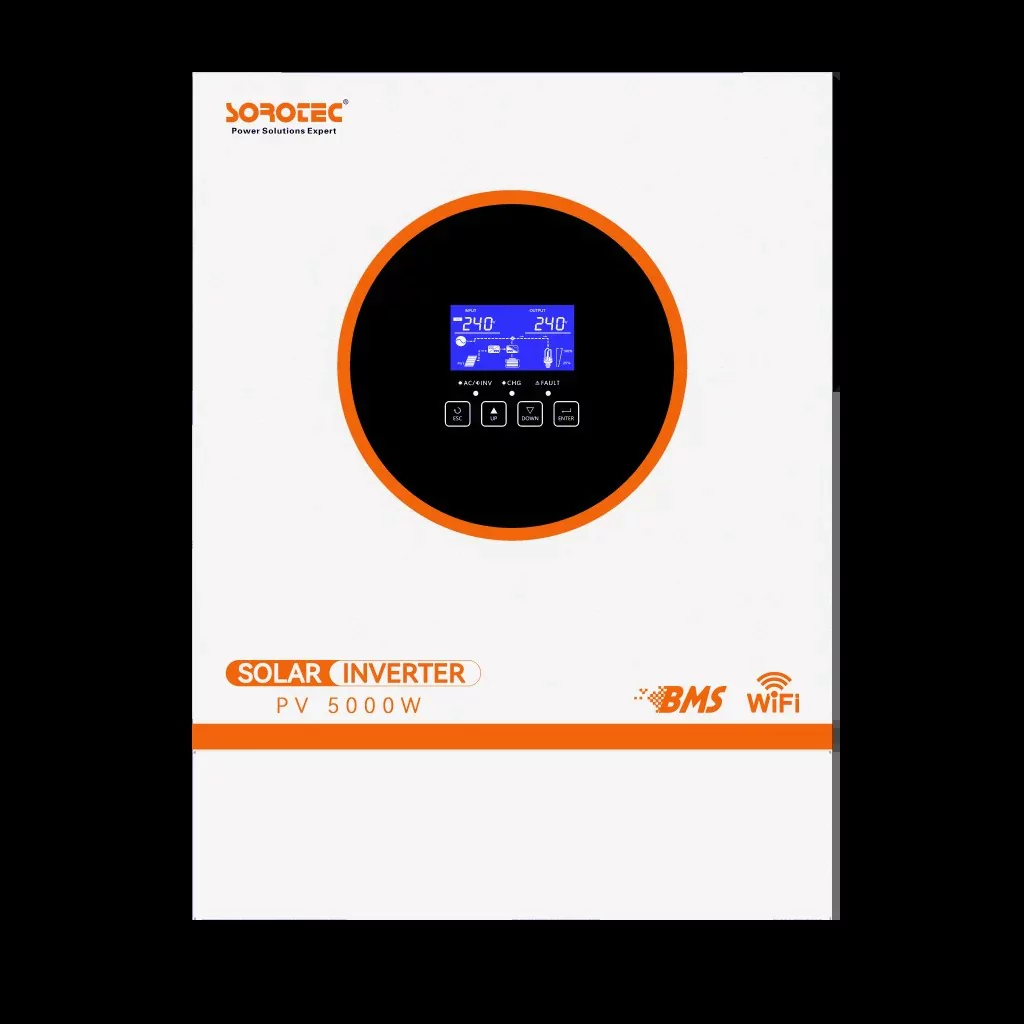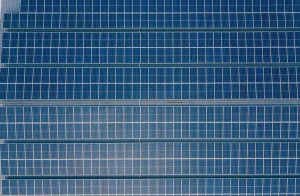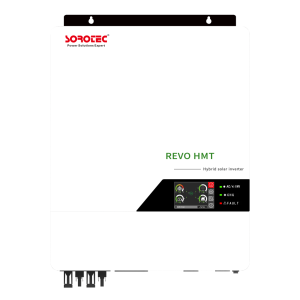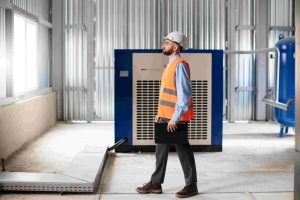This comprehensive guide examines the key differences between series and parallel inverter configurations, detailing their operational principles, ideal applications, and technical advantages. Series inverters excel in high-voltage scenarios like industrial solar installations, offering superior efficiency through sequential voltage summation. Parallel systems provide scalable, redundant solutions perfect for residential and commercial applications where load-sharing is critical. The article compares their electrical characteristics, maintenance requirements, and cost considerations while highlighting SOROTEC’s advanced product lines featuring cutting-edge technologies like MPPT tracking and hybrid functionality. Practical selection criteria help readers choose optimal configurations based on system size, environmental factors, and future expansion needs, with insights into emerging trends in renewable energy integration and smart grid technologies.
What Are Series Inverters?
How Do Series Inverters Function?
Series inverters transform DC power to AC through connected components arranged sequentially. This setup combines voltage outputs from multiple modules, creating higher voltage levels ideal for demanding applications. The technology carefully controls energy transfer in stages, maintaining precise timing and optimal performance. Our products demonstrate exceptional durability, performing consistently in harsh weather and extended use.
What Are the Key Features of Series Inverters?
These systems specialize in managing elevated voltage requirements effectively. They incorporate sophisticated functions, including:
- Maximum Power Point Tracking for solar optimization
- Integrated battery control systems
- Hybrid operation modes (grid-tied and standalone)
For instance, the REVO VM II PRO model combines photovoltaic and battery functions with intelligent power distribution and cell balancing. These capabilities make them perfect for situations demanding strong, adaptable performance.
How Are Series Inverters Used in Industrial Applications?
In industrial settings, series inverters are employed to power machinery, support renewable energy systems, and ensure uninterrupted operations during power outages. Their ability to manage high-voltage loads makes them ideal for large-scale photovoltaic installations and energy storage systems. The SES Energy Storage converter integrates optical and storage solutions, enabling efficient demand management and modular design for dynamic expansion.
Why Choose Series Inverters for Specific Scenarios?
Inverters in a series come with benefits such as improved efficiency and reliability, along with the ability to scale easily as needed. They are designed to reduce energy wastage during conversion and maintain performance even when dealing with different loads. Additionally, the optimized manufacturing methods help in delivering cost solutions, making them ideal for applications that demand consistent performance over long durations.
How Do Parallel Inverters Work?
What Mechanisms Define Parallel Inverter Operations?
Parallel inverters work by spreading out loads among several units that work together at the same time. In contrast to series setups, they keep a voltage output while boosting the current capacity with each additional unit. This setup guarantees backup. Improves the overall reliability of the system.
What Distinguishes Parallel Inverters from Other Types?
Parallel inverters possess features such as their modular design and capability for gradual capacity expansion. They come equipped with communication protocols to efficiently synchronize multiple units together. For example, some variants include communication ports like RS485 or CAN for seamless integration, with battery management systems ( BMS).
Where Are Parallel Inverters Commonly Applied?
Parallel inverters are widely used in power systems requiring scalability and redundancy. Applications range from residential solar setups to commercial energy storage solutions where load sharing is critical. Their modular approach allows users to adapt systems based on evolving energy demands.
What Benefits Do Parallel Inverters Offer for Scalable Solutions?
The main advantage of inverters lies in their capacity to scale up operations without compromising on efficiency or reliability. By integrating units into the system configuration, users can increase their capacity while maintaining operational stability even in the event of unit malfunction.
How Do Series and Parallel Inverters Differ Technically?
What Variations Exist in Electrical Configurations?
The primary difference between series and parallel inverters lies in their configurations; Series setups aggregate voltages from modules while maintaining constant current levels; conversely, parallel setups merge currents while ensuring stable voltage output.
How Do Efficiency Levels Compare Between Them?
Series inverters typically offer higher efficiency due to reduced energy losses during conversion processes. However, parallel inverters excel when redundancy and load-sharing capabilities are prioritized.
How Is Load Distributed Differently Between Configurations?
In setups involving a series connection of modules, the loads are distributed one after another, which is ideal for high-voltage needs. On the other hand, when units are connected in parallel, the loads are divided equally between them, improving the ability of the system to withstand failures of individual components.
What Is the Impact on Reliability and Redundancy?
Series configurations prioritize efficiency but may lack redundancy if one module fails; this can disrupt the entire system. Parallel setups mitigate this risk by enabling continued operation even if one unit becomes non-functional.
Explore advanced inverter technologies tailored to your needs at SOROTEC. Whether you’re seeking cutting-edge solutions for industrial or residential applications, discover how our expertise can empower your projects with unparalleled efficiency and reliability.
Practical Considerations When Choosing Between Series and Parallel Inverters
How Do System Size and Power Requirements Influence Your Decision?
Considering system size and power needs is crucial when deciding between a series or parallel inverter setup, with series inverters being preferred for high-voltage scenarios where the output voltage adds up from module voltages, making them well-suited for extensive solar panel setups and industrial systems requiring top-notch efficiency and significant power generation capabilities. The REVO VM II PRO series provides a blend of capabilities that cater to both on-grid and off-grid applications through features such as battery equalization and intelligent load management systems. On the other hand, parallel inverters are great for situations that call for scalability and backup options by ensuring a steady voltage output alongside increased current handling capacity. Thus making them a favored option for residential installations or commercial settings, with varying energy requirements.
What Are the Maintenance and Scalability Considerations?
Maintenance is often more straightforward with parallel inverter systems due to their modular design. If one unit fails, it can be replaced without disrupting the entire system. This feature enhances reliability and reduces downtime. On the other hand, series configurations require careful synchronization of components to ensure consistent performance, which can complicate maintenance efforts. Scalability also varies significantly; parallel systems allow incremental expansion by adding more units as energy needs grow, whereas series systems are less flexible in this regard.
How Do Environmental and Operational Conditions Impact Choice?
The choice between these setups heavily depends on the working conditions they are placed in. The series inverters excel in environments with few disturbances from outside sources. However, the parallel systems tend to handle component malfunctions as they share the workload among several units, for added reliability and backup. Our inverters are known for their stability and reliability in challenging weather conditions or when operating continuously for extended periods. For environments or situations where uptime is critical, pair configurations offer an extra level of assurance.
What Are the Cost Implications of Each Configuration?
Cost factors frequently play a role in decision-making processes. For instance, inverter series are generally associated with initial costs because of their simple design. However, the maintenance costs may escalate if the system becomes intricate. On the one hand, the parallel systems require a higher upfront investment due to their modular structure, but offer long-term savings through easier maintenance and scalability. We strive to optimize costs through design and manufacturing techniques to deliver cost-effective solutions without compromising on quality standards.
Integration of SOROTEC Products in Series and Parallel Configurations
How Do Advanced Inverter Technologies Enhance Performance?
Modern inverters incorporate:
- Precision solar tracking (MPPT)
- Battery communication ports
- Protective systems for tough conditions
- REVO HM series includes dust protection and current safeguards
Which Specific Models Excel in Series Configurations?
Certain models stand out for their capabilities in series configurations. The REVO VM III-T series is designed for off-grid applications with features like detachable LCD control modules and compatibility with high PV input voltage ranges. These characteristics make it highly adaptable to diverse operational requirements.
What Makes Parallel Solutions Unique?
Parallel solutions shine through their ability to scale efficiently without compromising reliability. They support dynamic expansion by allowing additional units to be integrated seamlessly into existing setups. The SES Energy Storage converter exemplifies this by enabling modular designs for incremental capacity growth.
How Can You Select Optimal Products for Industrial Applications?
Industrial needs often demand customized solutions tailored to specific operational requirements. Demand confirmation ensures that customers receive products suited precisely to their power, function, application scenario (household, industrial, or commercial), installation location, etc. By consulting experts during the selection process, you can identify models that align perfectly with your objectives.
Are Customization Options Available?
Customization is increasingly becoming a standard offering among advanced inverter manufacturers. Products like the Hybrid On & Off Grid REVO VM IV PRO-T series offer customizable status LED rings with RGB lights. Such features not only enhance functionality but also allow users to tailor solutions according to aesthetic or technical preferences.
Future Trends in Series and Parallel Inverter Technology
Which Innovations Are Driving Efficiency Improvements?
Technological advancements continue to push boundaries in inverter efficiency. Built-in MPPT technology ensures optimal solar energy utilization even under fluctuating environmental conditions. Additionally, developments like global cloud platforms enable real-time monitoring via mobile apps.
How Is Renewable Energy Integration Shaping Inverter Technology?
Renewable energy sources such as solar and wind are increasingly being integrated into power systems. Hybrid on-grid/off-grid systems support self-use strategies alongside peak-valley tariff management. These capabilities make modern inverters indispensable tools for sustainable energy solutions.
What Challenges Lie Ahead for Power Systems?
Emerging challenges include addressing cybersecurity risks associated with interconnected devices and managing grid stability amidst growing renewable penetration. Dynamic expansion capabilities ensure that future upgrades remain feasible without extensive overhauls. Opportunities lie in developing smarter algorithms capable of predictive maintenance based on real-time analytics.
FAQs
Q1. Which configuration is better suited for large-scale photovoltaic installations?
A: Series configurations are ideal due to their ability to handle high-voltage requirements efficiently.
Q2. Can I upgrade my existing system from series to parallel?
A: While technically possible, transitioning between configurations often requires significant adjustments; consult an expert before proceeding.
Q3. How do I determine if an inverter solution aligns with my operational needs?
A: Evaluate factors such as load requirements, environmental conditions, scalability potential—and consult professional guidance when needed!










